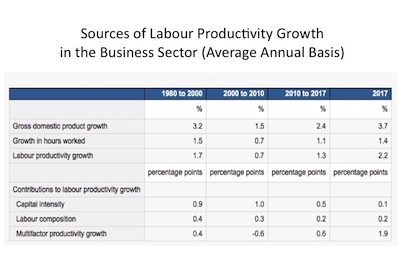Sales Reimagined: Virtual Selling Requires a New Mindset, Skillset and Toolkit

Apr 27, 2021
By Swati Vora-Patel
Recently, I have started watching a series on Netflix called New Amsterdam that has shaped my views on change management and leadership. The premise of the show is based on two powerful questions that a newly-appointed medical director poses to his staff every day: “How can I help?” and “What can we do to make a difference?”
While they might seem like simplistic concepts, these questions can move mountains. In the show, the medical director asks these questions to demonstrate that he is “one with his team”; that he is approachable, caring and ready to lend his support whenever and however it is needed. He also challenges his staff to become equal collaborators and contributors, empowering them to make decisions that ladder up to a common good.
If you take this same concept and apply it to our own work lives, I believe we have become better change agents during this pandemic: we are developing new skills to better service our customers/stakeholders. We are also more resourceful in how we do our jobs and conduct business, and have developed deeper trust in one another, recognizing that we are all feeling vulnerable when adapting to changes.
This pandemic has also cast light on the need for reimaging new possibilities. This not only spans program and product offerings, but how customers are serviced. This could not be more true for those in Sales roles who must adopt virtual skills to better engage with customers. According to the Rain Group[1], there is a significant gap in how salespeople perform on virtual calls: only one in four salespeople are conducting virtual calls effectively across these factors that influence customers’ purchasing decisions:
• 26% of customers believe salespeople are skilled at leading a thorough needs discovery virtually
• 34% of customers report that salespeople are skilled at showing them what’s possible or how to solve a problem
• 26% of customers say salespeople are competent listeners
• 16% of customers say salespeople are very effective at making the ROI case when selling virtually
Furthermore, a report by McKinsey and Co. indicates: “Suppliers who provide outstanding digital experiences to their customers are more than twice as likely to be chosen as a primary supplier than those who provide poor experiences.”[2]
There is tremendous opportunity for sales growth and for sales professionals to sharpen their mindsets, skillsets and toolkits so they can become more proactive, deliberate and leading-edge in their transition from face-to-face customer interactions to virtual selling.
How can I help?
With this lens on sales reinvention and to help the electrical channel rise to this “next normal,”
EFC asked its members: “What can we do to make a difference?” The answer was loud and clear: our industry needed actionable tips and techniques on how to better engage with customers in virtual meetings.
To address this need, EFC held a training webinar in April, led by Dave Mahr from the Rain Group, to share virtual sales techniques and best practices to help our industry’s sales workforce:
• better engage customers in meaningful discussions
• use technology to connect and collaborate with customers
• organize and plan virtual meetings so everyone understood the rules of engagement
The following are just some of the key takeaways shared during the webinar that can be applied at your next meeting[3]:
1. Set expectations before the meeting. There’s nothing worse than beginning your virtual meeting and nobody has their webcam turned on. To help alleviate this, add a note in your invitation that indicates your meeting will be a “webcam on” session for all attendees — and reinforce this again at the start of your meeting. This should help get 90%+ webcams on.
It is also a good practice to send an agenda ahead of time and ask if your customers have any additions. Share the agenda on screen at the beginning of the meeting to level-set what you plan to share and discuss with them.
2. Project professionalism. Make sure you look presentable and are dressed in appropriate business attire. Ensure your lighting is good and the camera angle is focused on your entire face (not just your forehead, ear or chin). You want attendees to see your face in the video frame, so while your background should be visible, ensure that it is not overpowering or distracting.
3. Maintain eye contact. To keep your customers engaged, look directly into the camera when speaking. If you have multiple screens and are sharing a document that requires you to look away from the camera, tell your customers that your eyes are diverting to look at another screen. This builds trust and connection.
4. The Ringelmann effect: Oftentimes, when there are many participants in a virtual meeting, the Ringelmann effect sets in: this phenomenon states that the more people who are involved in a task, the less effort they devote to it individually. Therefore, the more people you have in a virtual meeting, the less likely each person is to be engaged. So either keep your meetings limited to a few key people if possible and/or be sure to check in with customers regularly and use collaborative tools such as chat features, interactive whiteboards and polls.
5. The 30 + 3 rule: capture customers’ attention in the first 30 seconds and re-achieve engagement every three minutes. You can do this by having someone else present, asking questions, using visuals, graphs, videos, etc.
6. Frequent check-ins: Be sure to pause and check in with your customers by asking questions to direct people: “Terry, what are your thoughts about what I’ve shared?” (call out specific people; it is absolutely fine if they don’t provide feedback. This check-in helps prompt others to keep focused).
7. Listen to learn: practice active listening so you can fully understand customers’ needs. Consider having a discovery checklist available to guide you through guided questions (download the Rain Group’s “50 Powerful Sales Questions”). And don’t forget to ask: “How can I help,” and “What can we do to make a difference?”
There is a lot to think about when hosting a virtual sales meeting. You won’t always get it perfectly right, but with some forethought and preparation, you will make a great impression with customers.
Virtual selling is here to stay
It may be hard to imagine right now, but eventually we will be living in a post-pandemic world. This next normal will feel familiar, but it will not be the same. There is a sense of shared concern among sales leaders that some staff are riding the wave and waiting for things to return to normal so they can visit customers in person once again. While face-to-face meetings will return, virtual selling will be ingrained into the next normal.
Like any new skill, practice makes perfect. The most important aspect of virtual selling is simple… just start.
Swati Vora-Patel is VP, Marketing & Channel Development, Electro-Federation Canada.
Notes
1. https://www.rainsalestraining.com/blog/virtual-selling#Influence-Buyer-Purchase-Decisions
2. https://www.mckinsey.com/business-functions/marketing-and-sales/our-insights/the-b2b-digital-inflection-point-how-sales-have-changed-during-covid-19
3. For more details, view the Rain Group’s “4 Virtual Selling Imperatives”










